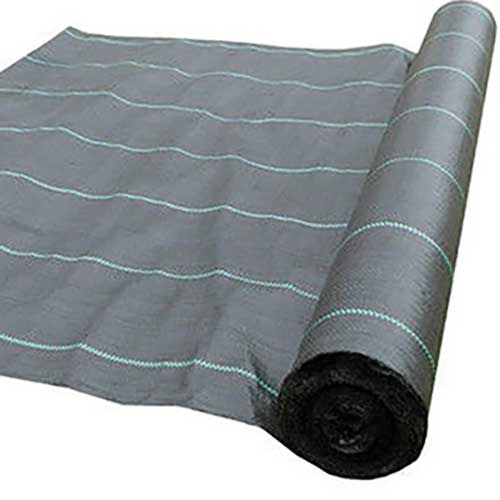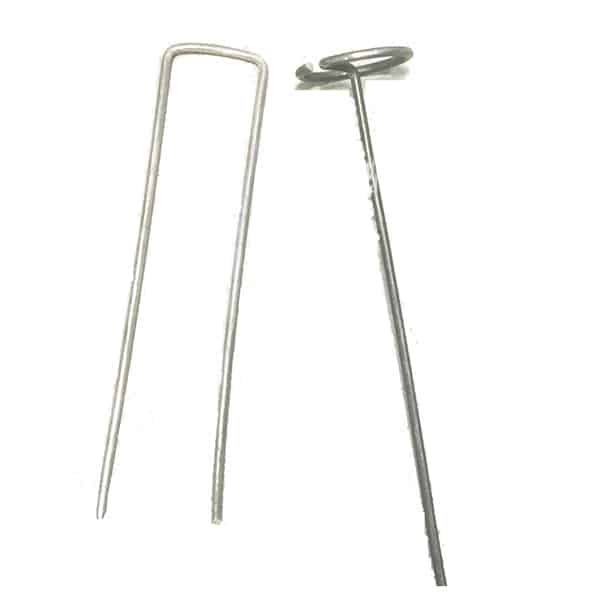Weed Ground Fabric
Weed ground fabric, also known as weed barrier fabric, landscape fabric, or weed control fabric, is a permeable textile material designed to suppress weed growth while allowing water, air, and nutrients to penetrate the soil. It is commonly used in landscaping, gardening, and agriculture to control weeds in outdoor spaces such as flower beds, vegetable gardens, pathways, and around trees and shrubs.
Key features and benefits:
- Weed suppression: Weed ground fabric serves as a physical barrier that blocks sunlight from reaching weed seeds and seedlings underneath. By depriving weeds of sunlight, they are unable to photosynthesize and grow, effectively suppressing weed growth in landscaped areas and garden beds. This reduces the need for manual weeding and minimizes competition between weeds and desired plants for water, nutrients and space.
- Water permeability: Permeable to water, this fabric allows rainfall, irrigation and natural moisture to penetrate the soil and reach plant roots. This ensures that plants receive adequate hydration and helps prevent water logging or pooling on the soil surface. The permeability of the fabric also allows excess water to drain away, reducing the risk of root rot and water-related issues.
- Air circulation: Despite its barrier properties, weed ground fabric allows air to circulate through the soil, promoting healthy root growth and soil aeration. Adequate air circulation is essential for maintaining soil health and microbial activity, which contribute to nutrient cycling and plant vitality.
- Soil protection: By covering the soil surface, the fabric prevents soil particles from being displaced or washed away, maintaining soil structure and fertility. This is particularly beneficial on slopes, bare ground, or exposed areas where erosion is a concern.
- Temperature regulation: Weed ground fabric helps regulate soil temperature by insulating the soil and reducing temperature fluctuations. This can be beneficial for promoting root growth and protecting plants from extreme heat or cold. In cooler climates, the fabric can help warm the soil and extend the growing season, while in warmer climates, it can help keep the soil cooler and prevent heat stress on plants..
- Easy installation and maintenance: Weed ground fabric is easy to install and requires minimal maintenance. It can be cut to size and laid directly onto the soil surface, secured with landscape pins or staples to prevent shifting or lifting. Once installed, the fabric requires occasional monitoring to ensure that it remains in place and effectively suppresses weed growth. Over time, organic matter may accumulate on the surface of the fabric, requiring periodic removal to maintain its effectiveness.
Contact Berry Hill Irrigation Specialists to learn more.
Results
Weed ground fabric, also known as weed barrier fabric, landscape fabric, or weed control fabric, is a permeable textile material designed to suppress weed growth while allowing water, air, and nutrients to penetrate the soil. It is commonly used in landscaping, gardening, and agriculture to control weeds in outdoor spaces such as flower beds, vegetable gardens, pathways, and around trees and shrubs.
Key features and benefits:
- Weed suppression: Weed ground fabric serves as a physical barrier that blocks sunlight from reaching weed seeds and seedlings underneath. By depriving weeds of sunlight, they are unable to photosynthesize and grow, effectively suppressing weed growth in landscaped areas and garden beds. This reduces the need for manual weeding and minimizes competition between weeds and desired plants for water, nutrients and space.
- Water permeability: Permeable to water, this fabric allows rainfall, irrigation and natural moisture to penetrate the soil and reach plant roots. This ensures that plants receive adequate hydration and helps prevent water logging or pooling on the soil surface. The permeability of the fabric also allows excess water to drain away, reducing the risk of root rot and water-related issues.
- Air circulation: Despite its barrier properties, weed ground fabric allows air to circulate through the soil, promoting healthy root growth and soil aeration. Adequate air circulation is essential for maintaining soil health and microbial activity, which contribute to nutrient cycling and plant vitality.
- Soil protection: By covering the soil surface, the fabric prevents soil particles from being displaced or washed away, maintaining soil structure and fertility. This is particularly beneficial on slopes, bare ground, or exposed areas where erosion is a concern.
- Temperature regulation: Weed ground fabric helps regulate soil temperature by insulating the soil and reducing temperature fluctuations. This can be beneficial for promoting root growth and protecting plants from extreme heat or cold. In cooler climates, the fabric can help warm the soil and extend the growing season, while in warmer climates, it can help keep the soil cooler and prevent heat stress on plants..
- Easy installation and maintenance: Weed ground fabric is easy to install and requires minimal maintenance. It can be cut to size and laid directly onto the soil surface, secured with landscape pins or staples to prevent shifting or lifting. Once installed, the fabric requires occasional monitoring to ensure that it remains in place and effectively suppresses weed growth. Over time, organic matter may accumulate on the surface of the fabric, requiring periodic removal to maintain its effectiveness.
Contact Berry Hill Irrigation Specialists to learn more.

$50.00 – $284.00
Ground Cover in 300 foot rolls with Lines. #GRO

$9.00 – $55.00

